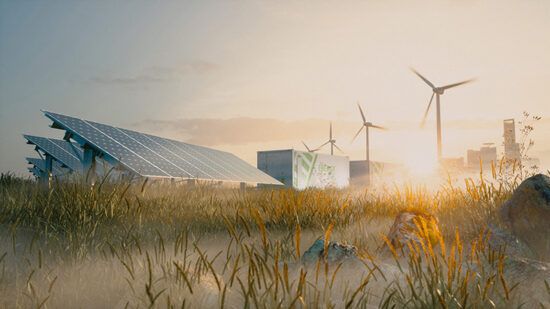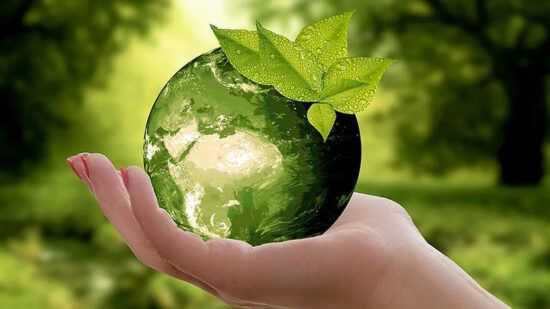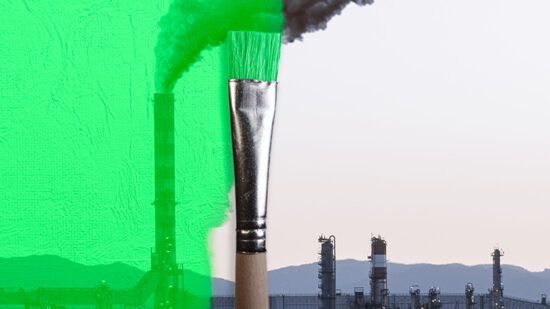While the coronavirus crisis has damaged economies all over the world in past six months, there has been one silver lining: clearer skies, halted cities, quietened roads, cleaner canals and slashed emissions.
May we be able to learn and continue some of the positive environmental outcomes of the ongoing lockdowns? Global energy demand this year is set to fall by 6% (seven times the decline seen in the immediate aftermath of the global financial crisis), along with 10 million metric tons less CO2 emitted from aviation. Previous dogma dictated that this emission reduction was impossible, but has now happened in a matter of weeks and months; it begs the question is permanent change possible?
As countries begin to emerge and recover from the crisis, Europe in particular has placed the fight against climate change at the heart of their recovery plans. In July 2020, the European Commission agreed on a €750bn recovery fund with 30% allocated for climate investment (increased from 25% originally proposed). The deal is captioned ‘Striving to be the first climate-neutral continent’ and Commission President Ursula von der Leyen has made the green deal her top priority, with the aim of eliminating net emissions of greenhouse gases by 2050. The deal includes a vast range of allocations – €91bn a year for home energy efficiency and green heating, €25bn of renewable energy, €20bn for clean cars, and €60bn for zero-emissions trains; furthermore two million electric vehicle charging points are to be added and one million tonnes of clean hydrogen is to be produced to replace existing CO2 emissions.
They also have aims to reach further than just their member states with a proposed border tax on carbon-intensive industrial imports, raising money as well as promoting the green agenda to a wider audience. The deal is estimated to create over one million jobs and help transition workers to developing green alternatives.
European green infrastructure and utilities have been relatively insulated from the recent market slump in March. The sector’s outperformance has been driven by the turn in earnings cycle, low bond yields, increasing confidence, along with social and political ESG enthusiasm. This sector is in a strong position to lead the charge in the transition and is becoming ever-more topical.
The International Energy Agency forecasts that renewable energy capacity will rise 50% by 2024 versus 2019 levels , driven by increased regulations and political and social demand to curb climate change. It’s estimated that in order to be carbon neutral by 2050, over 80% of European electricity will have to come from renewable sources; only 30% of total production was generated by renewables in 2019. Technological advances continue to allow the cost of power generation from gas and wind to collapse. This along with the boost to capital expenditure by NEPs (National Energy Plans – by the 27 EU member states) implies around a 65% capex acceleration in clean infrastructure in Europe compared today, with visible effects evident within two years.
Leading the way in this transition is onshore wind and solar power – both having experienced plummeting levelised costs of energy (LCOE – a commonly used measure of how the cost of energy generation system compares to what it provides), our analysis identifies potential in companies such as Iberdrola.
Other important areas set to benefit from the green investment windfall will be the transport sector; the French government has outlined an €8bn support package for automotive development, with over €1bn to be directed towards electric vehicles. Electrification of heating, transport and industry will lead to further decarbonisation of economies as well as reducing total energy consumption. Electric vehicles use only 25% of the energy consumed by conventional vehicles, and electric heat pumps perform 4-5 times better than their traditional counterparts.
There have been dramatic changes in approaches across more traditional infrastructure names, for example, the conventional oil and gas company BP announce a considerable change to their business strategy, diverting resources into low carbon investments with a detailed 10-year plan of action to align itself with the net-zero emissions goal. The announcement by BP was positively taken by investors and more are likely to follow suit, with Oil and Gas production expected to fall by 40% this decade.
While companies are realigning themselves to the greener future there are important developments elsewhere; Democratic Presidential candidate Joe Biden’s has recently published his own green agenda in July 2020. Biden has promised, if elected, to put clean energy and green infrastructure at the centre of a $2trn plan to revive the US economy, pledging the country would take “irreversible steps” to cut emissions. Under Biden’s plan the US would re-join the Paris climate accord. He has pledged to decarbonise US power generation by 2035, electrify large portions of the countries transport network and cracking down on pollution. Biden’s main goal is to link the green agenda and transition to jobs and economic recovery.
In a year with global lockdowns, unprecedented monetary and fiscal stimulus and hugely volatile markets, countries are slowly beginning to emerge from the coronavirus crisis and it is evident that the climate question is becoming ever more important as they do. While the green narrative is growing globally, Europe is set to continue to lead the climate battle with many sectors and companies well positioned to benefit as they do.








